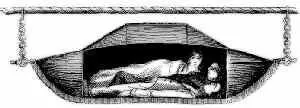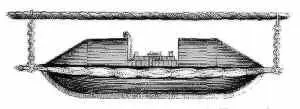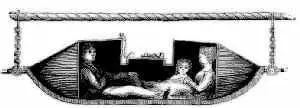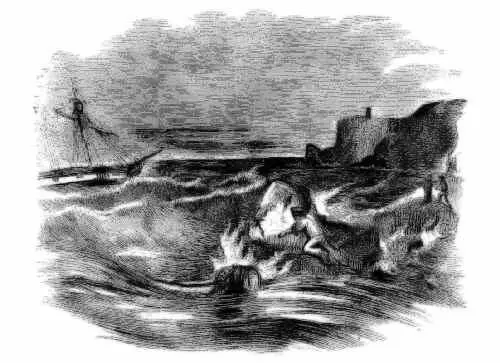Various - Harper's New Monthly Magazine, Vol. 3, July, 1851
Здесь есть возможность читать онлайн «Various - Harper's New Monthly Magazine, Vol. 3, July, 1851» — ознакомительный отрывок электронной книги совершенно бесплатно, а после прочтения отрывка купить полную версию. В некоторых случаях можно слушать аудио, скачать через торрент в формате fb2 и присутствует краткое содержание. Издательство: Иностранный паблик, Жанр: foreign_antique, periodic, foreign_edu, на английском языке. Описание произведения, (предисловие) а так же отзывы посетителей доступны на портале библиотеки ЛибКат.
- Название:Harper's New Monthly Magazine, Vol. 3, July, 1851
- Автор:
- Издательство:Иностранный паблик
- Жанр:
- Год:неизвестен
- ISBN:нет данных
- Рейтинг книги:3 / 5. Голосов: 1
-
Избранное:Добавить в избранное
- Отзывы:
-
Ваша оценка:
- 60
- 1
- 2
- 3
- 4
- 5
Harper's New Monthly Magazine, Vol. 3, July, 1851: краткое содержание, описание и аннотация
Предлагаем к чтению аннотацию, описание, краткое содержание или предисловие (зависит от того, что написал сам автор книги «Harper's New Monthly Magazine, Vol. 3, July, 1851»). Если вы не нашли необходимую информацию о книге — напишите в комментариях, мы постараемся отыскать её.
Harper's New Monthly Magazine, Vol. 3, July, 1851 — читать онлайн ознакомительный отрывок
Ниже представлен текст книги, разбитый по страницам. Система сохранения места последней прочитанной страницы, позволяет с удобством читать онлайн бесплатно книгу «Harper's New Monthly Magazine, Vol. 3, July, 1851», без необходимости каждый раз заново искать на чём Вы остановились. Поставьте закладку, и сможете в любой момент перейти на страницу, на которой закончили чтение.
Интервал:
Закладка:
Shipwrecked mariners reaching this hut, in fog or snow, will find the town of Nantucket two miles distant, due west.
It is impossible to contemplate such a spectacle as this, without a feeling of strong emotion—and a new and deeper interest in the superior excellency and nobleness of efforts made by man for saving life, and diminishing suffering, in comparison with the deeds of havoc and destruction which have been so much gloried in, in ages that are past. The Life-Boat rests in its retreat, not like a ferocious beast of prey, crouching in its covert to seize and destroy its hapless victims, but like an angel of mercy, reposing upon her wings, and watching for danger, that she may spring forth, on the first warning, to rescue and save .

The Life- Car is a sort of boat, formed of copper or iron, and closed over, above, by a convex deck with a sort of door or hatchway through it, by which the passengers to be conveyed in it to the shore, are admitted. The car will hold from four to five persons. When these passengers are put in, the door, or rather cover , is shut down and bolted to its place; and the car is then drawn to the land, suspended by rings from a hawser which has previously been stretched from the ship to the shore.

To be shut up in this manner in so dark and gloomy a receptacle, for the purpose of being drawn, perhaps at midnight, through a surf of such terrific violence that no boat can live in it, can not be a very agreeable alternative; but the emergencies in which the use of the life-car is called for, are such as do not admit of hesitation or delay. There is no light within the car, and there are no openings for the admission of air. 4 4 None such are in fact required, for the car itself contains air enough for the use of its passengers for a quarter of an hour, and there is rarely occupied more than a period of two or three minutes to pass it through the surf to the shore.
It is subject, too, in its passage to the shore, to the most frightful shocks and concussions from the force of the breakers. The car, as first made, too, was of such a form as required the passengers within it to lie at length, in a recumbent position, which rendered them almost utterly helpless. The form is, however, now changed—the parts toward the ends, where the heads of the passengers would come, when placed in a sitting posture within, being made higher than the middle; and the opening or door is placed in the depressed part, in the centre. This arrangement is found to be much better than the former one, as it greatly facilitates the putting in of the passengers, who always require a greater or less degree of aid, and are often entirely insensible and helpless from the effects of fear, or of exposure to cold and hunger. Besides, by this arrangement those who have any strength remaining can take much more convenient and safer positions within the car, in their progress to the shore, than was possible under the old construction.


The car, as will be seen by the foregoing drawings, is suspended from the hawser by means of short chains attached to the ends of it. These chains terminate in rings above, which rings ride upon the hawser, thus allowing the car to traverse to and fro, from the vessel to the shore. The car is drawn along, in making these passages, by means of lines attached to the two ends of it, one of which passes to the ship and the other to the shore. By means of these lines the empty car is first drawn out to the wreck by the passengers and crew, and then, when loaded, it is drawn back to the land by the people assembled there, as represented in the engraving at the head of this article.
Perhaps the most important and difficult part of the operation of saving the passengers and crew in such cases, is the getting the hawser out in the first instance, so as to form a connection between the ship and the land. In fact, whenever a ship is stranded upon a coast, and people are assembled on the beach to assist the sufferers, the first thing to be done, is always to "get a line ashore." On the success of the attempts made to accomplish this, all the hopes of the sufferers depend. Various methods are resorted to, by the people on board the ship, in order to attain this end, where there are no means at hand on the shore, for effecting it. Perhaps the most common mode is to attach a small line to a cask, or to some other light and bulky substance which the surf can easily throw up upon the shore. The cask, or float, whatever it may be, when attached to the line, is thrown into the water, and after being rolled and tossed, hither and thither, by the tumultuous waves, now advancing, now receding, and now sweeping madly around in endless gyrations, it at length reaches a point where some adventurous wrecker on the beach can seize it, and pull it up upon the land. The line is then drawn in, and a hawser being attached to the outer end of it, by the crew of the ship, the end of the hawser itself is then drawn to the shore.

THE CASK.
This method, however, of making a communication with the shore from a distressed vessel, simple and sure as it may seem in description, proves generally extremely difficult and uncertain in actual practice. Sometimes, and that, too, not unfrequently when the billows are rolling in with most terrific violence upon the shore, the sea will carry nothing whatever to the land. The surges seem to pass under, and so to get beyond whatever objects lie floating upon the water, so that when a cask is thrown over to them, they play beneath it, leaving it where it was, or even drive it out to sea by not carrying it as far forward on their advance, as they bring it back by their recession. Even the lifeless body of the exhausted mariner, who when his strength was gone and he could cling no longer to the rigging, fell into the sea, is not drawn to the beach, but after surging to and fro for a short period about the vessel, it slowly disappears from view among the foam and the breakers toward the offing. In such cases it is useless to attempt to get a line on shore from the ship by means of any aid from the sea. The cask intrusted with the commission of bearing it, is beaten back against the vessel, or is drifted uselessly along the shore, rolling in and out upon the surges, but never approaching near enough to the beach to enable even the most daring adventurer to reach it.
In case of these life-cars, therefore, arrangements are made for sending the hawser out from the shore to the ship. The apparatus by which this is accomplished consists, first, of a piece of ordnance called a mortar, made large enough to throw a shot of about six inches in diameter; secondly, the shot itself, which has a small iron staple set in it; thirdly, a long line, one end of which is to be attached to the staple in the shot, when the shot is thrown; and, fourthly, a rack of a peculiar construction to serve as a reel for winding the line upon. This rack consists of a small square frame, having rows of pegs inserted along the ends and sides of it. The line is wound upon these pegs in such a manner, that as the shot is projected through the air, drawing the line with it, the pegs deliver the line as fast as it is required by the progress of the shot, and that with the least possible friction. Thus the advance of the shot is unimpeded. The mortar from which the shot is fired, is aimed in such a manner as to throw the missile over and beyond the ship, and thus when it falls into the water, the line attached to it comes down across the deck of the ship, and is seized by the passengers and crew.
Читать дальшеИнтервал:
Закладка:
Похожие книги на «Harper's New Monthly Magazine, Vol. 3, July, 1851»
Представляем Вашему вниманию похожие книги на «Harper's New Monthly Magazine, Vol. 3, July, 1851» списком для выбора. Мы отобрали схожую по названию и смыслу литературу в надежде предоставить читателям больше вариантов отыскать новые, интересные, ещё непрочитанные произведения.
Обсуждение, отзывы о книге «Harper's New Monthly Magazine, Vol. 3, July, 1851» и просто собственные мнения читателей. Оставьте ваши комментарии, напишите, что Вы думаете о произведении, его смысле или главных героях. Укажите что конкретно понравилось, а что нет, и почему Вы так считаете.












